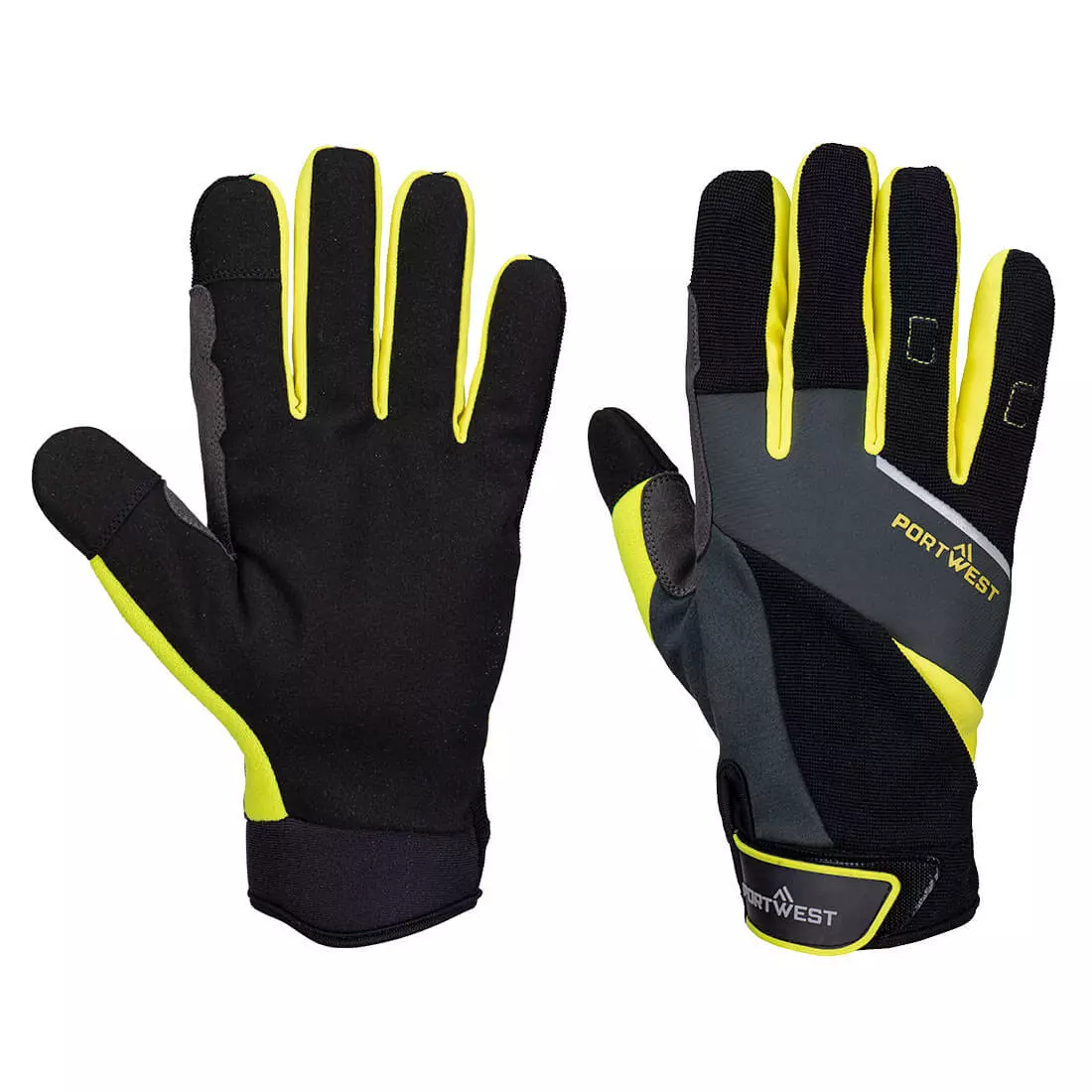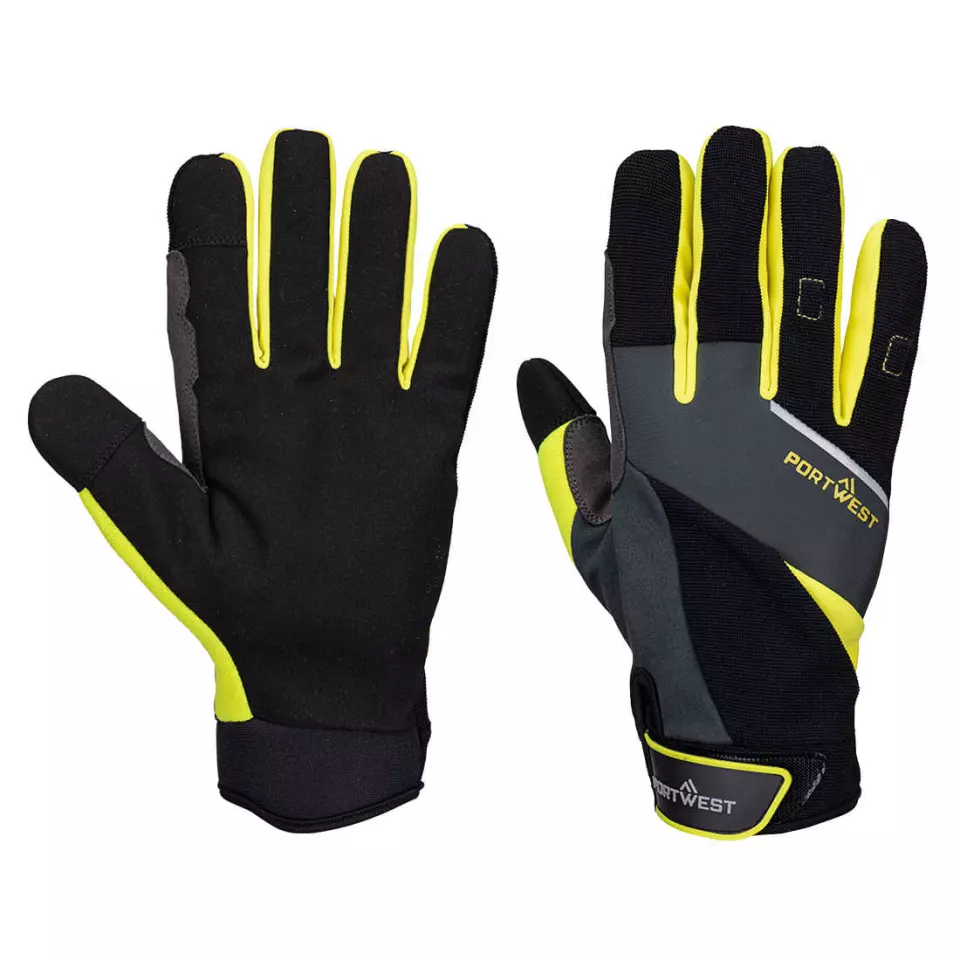
Features You'll Love

Cuff Style · Hook And Loop
Determines how the glove secures around the wrist, affecting fit, comfort, and protection coverage at the wrist area.

Support · Reinforced Thumb Crotch
Identifies areas of the glove with additional reinforcement for enhanced protection and durability in high-wear zones.
Portwest
DX4 LR Cut Glove, Black/Yellow, 12 pairs
DX4 LR Cut Glove, Black/Yellow, 12 pairs
5 / 5
215,31 €
Price per 12 pairs
17,94 € / pair
Choose size
Free delivery
Features You'll Love

Cuff Style · Hook And Loop
Determines how the glove secures around the wrist, affecting fit, comfort, and protection coverage at the wrist area.

Support · Reinforced Thumb Crotch
Identifies areas of the glove with additional reinforcement for enhanced protection and durability in high-wear zones.
Product description
This high-performing multi-purpose glove offers Level B cut resistance protection against sharp objects while maintaining touchscreen compatibility. The synthetic leather palm construction provides durability, while reflective tape enhances visibility in low light conditions. Designed for versatility across various applications, it features reinforced areas for extended wear and secure wrist fitting.
Product Features:
- Level B cut resistance for protection against sharp objects
- Highly durable synthetic leather palm
- Reflective tape for enhanced visibility in low light conditions
- Reinforced thumb crotch for added abrasion resistance
- Touchscreen device compatibility
- Wrist strap for secure fitting
- Lightweight and comfortable design
Standards:
- CE certified
- EN ISO 21420: 2020 Dexterity 4
- EN 388: 2016 + A1: 2018 (2X32B)